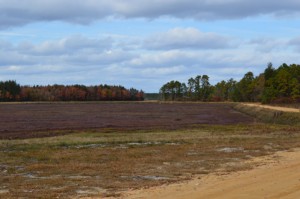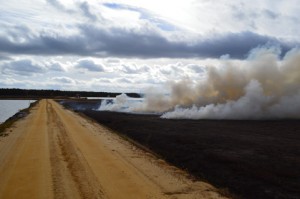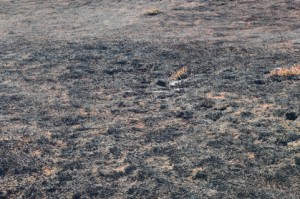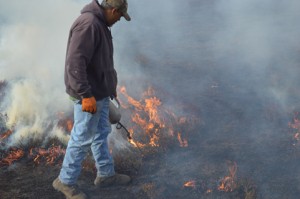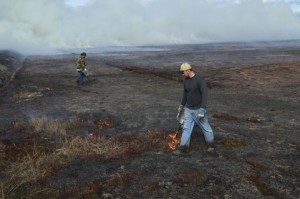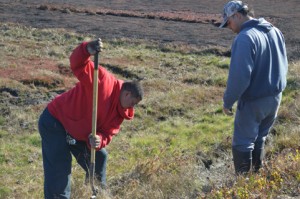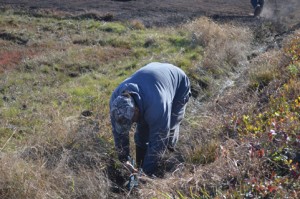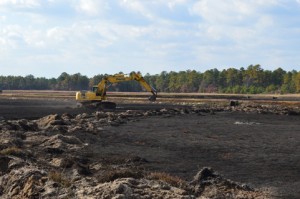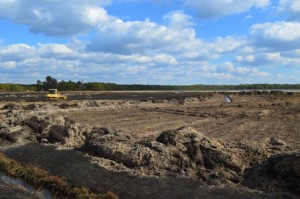Now that the crop is in and clean-up is just about done, it’s once again time to focus on bog renovation. Fall planting has started at Boricua, and with the Oswego renovation nearly complete, our team is turning its attention to the next system in our improvement plan: parts of 11 Acre and Ben Haines. 11 Acre #1 and 2 and Ben Haines #6 make up about 18 acres of ground and run on the same pump system, which is why we’re redoing these particular sections. “It’s not quite as big a project as the ones the last couple of years, but it’s going to be very manageable,” says Bog Renovations manager Joe Colon. “It’s a small amount of acreage, comparatively, but with the new acreage starting to produce, we’re not going to be losing anything.”
The first process in renovating preexisting acreage is a lot of fun for team members.
If we were simply removing the old vines, burning them wouldn’t be entirely necessary. However, it’s a lot easier to remove the irrigation and drainage if the vines are gone first. “You can’t pull that pipe out with vines in the way,” explains GM Fred Torres. “Once you get down to the turf, it’s much softer.”
In order to do that, each team member takes a can to the vines, going by the picking patterns and going by the prevailing winds. “We go by the picking patterns because they’re usually ‘fluffier’,” says team member Matt Giberson. “The less dense the are, the easier they’ll go up. Frankie [Torres] and Vince [Arnwine] are out there making sure the vines are lifted up so we can get underneath.” The winds are especially important, says Fred. “Once we get the permit for a controlled burn, we wait for good conditions. We had a wet morning, but once the sun came out, we were good to go. The breeze was coming from the south, which helped dry things out; it doesn’t burn as well when the clouds roll in. We had to burn against the wind to start, though, which was why we started from the bottom; once that was done, we could start from the top and not worry if the fire crossed a dam, because after that it had nowhere to go.”
Once the vines are burned, Joe’s team will take an excavator and pull the old pipe out of the ground, which will be a much more efficient process without the vines in the way. Team members are also digging out some of the old hardware by hand.
Once the old irrigation lines are torn out, the team will begin to push the old turf off the bogs and haul it away. “We’re going to try and get the briars out while we’re at it,” says Joe. “These bogs will be a lot bigger, too, because we’ll be using the entire acreage. We have a lot of gates to repair or replace, as well. We’re taking out all the small ditches and doing the land leveling, which will make it a lot easier to flood. And we don’t have to move the pump house or build a new one; that stays where it is.” Joe also points out that the previously existing sand layers will make putting in new topsoil easier. “We’re not going to have to do as much with that as we did out at Sim Place.”
It’s a lot of work, but our team is more than able to get it done. “We’re a well oiled machine,” Fred says. “We set out to do something and it gets done, because we plan ahead. We set our targets, and we knock ’em down.”

